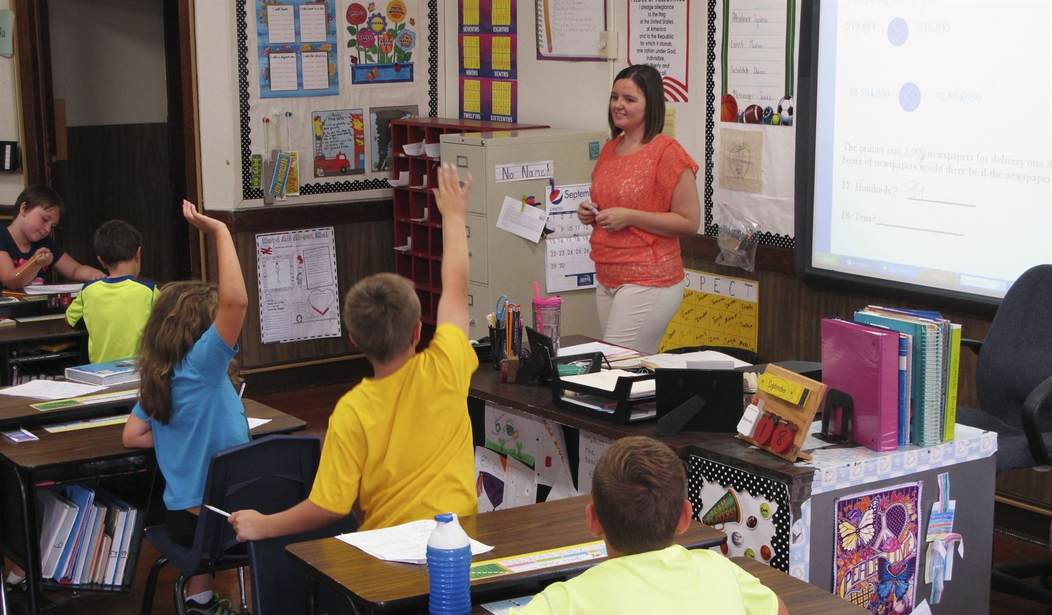One of the generational rituals for American parents has long been the anticipated (or dreaded) day when their children bring home their report cards from school to be signed and returned. Students who register mostly A’s and B’s might get an extra treat, while those with D’s and F’s may be steered into some extra study work if possible. But in recent years, that’s been changing. According to the president of Learning Heroes, a nonprofit group seeking to help parents better understand their children’s academic challenges, many parents don’t really understand how well or poorly their kids are performing or how to find helpful resources if they are struggling. And part of that is the fault of the “evolving” public school system. (Associated Press)
Nearly nine out of 10 parents believe their child is performing at grade level despite standardized tests showing far fewer students are on track, according to a poll released Wednesday by Gallup and the nonprofit Learning Heroes.
Report cards, which many parents rely on for a sense of their children’s progress, might be missing the whole picture, researchers say. Without that knowledge, parents may not seek opportunities for extra support for their children.
“Grades are the holy grail,” said Bibb Hubbard, founder and president of Learning Heroes. “They’re the number one indicator that parents turn to to understand that their child is on grade level, yet a grade does not equal grade-level mastery. But nobody’s told parents that.”
The disconnect between perception and reality is significant. The Gallup study being quoted showed that 89% of parents believed their child was reading at grade level and 88% believed the same about the child’s math skills. But in reality, half of all students began the last school year behind grade level in at least one of the two subjects. In some places, it’s far worse. In Illinois last year, there were more than 900 schools where only one in ten students could do math at grade level. In Baltimore, they found 23 public schools where not a single student was able to pass a proficiency test in math.
The linked report places much of the blame on the “vagueness” of report cards, claiming that a system of A’s, B’s, and C’s doesn’t tell the full story. They also note that too many parents don’t ask enough questions when looking at their children’s grades or seek out their teachers for guidance. All of that may be true, but it’s hardly the full story.
Public schools went through some significant changes during the pandemic, none of which made things better for students. Standards were effectively removed to the point where “nobody can fail.” But even with the pandemic behind us, too many public schools have stuck with that philosophy. It’s part of a larger, politically correct movement embraced by the teachers’ unions, claiming that any system where one group of students – particularly minorities – doesn’t score as high as others is inherently racist.
With that in mind, many of these schools are simply giving passing grades to anyone, regardless of performance, attendance, or even disciplinary issues. Other schools are abandoning grades altogether. Everyone gets a trophy, as the saying goes. This masks serious performance shortcomings that might have been addressed through tutoring or extra work at home. It also removes some of the motivation for the better students to put in the work and excel. Why bother doing all of the heavy lifting if everyone is just going to get the same grade anyway?
One expert from Purdue University believes that expectations are too low and teaching methods are insufficient, particularly in math.
I believe children aren’t receiving a strong enough foundation for basic math skills in the earliest years. Preschool teachers spend less than five minutes per day on numbers. Nearly a third of classrooms provide no number instruction at all.
In kindergarten, the level of math instruction is typically well below what children already know and can do. The misalignment could be attributable to the low expectations set forth in the Common Core Standards – the academic standards shared across the majority of states. Over 85% of children are able to meet certain end-of-kindergarten expectations before they even enter kindergarten. These disparities continue through elementary school.
What we’re seeing here is a much broader example of what’s traditionally been called “the soft bigotry of low expectations.” In the case of our public schools, it extends far beyond questions of race and gender. Restoring previous standards in public education would be a challenging task involving a lot of work. Unfortunately, too many people entrusted with running the system simply won’t put in the effort. It’s far easier to simply give every student a passing grade, hand them a diploma, and send them on their way. Unfortunately, many of them will be accepted to college only to find when they arrive that they are unable to keep up with the program and they wind up dropping out. We’re witnessing a generational failure that will carry significant negative impacts for generations to come, and nobody seems to know how to deal with it.







